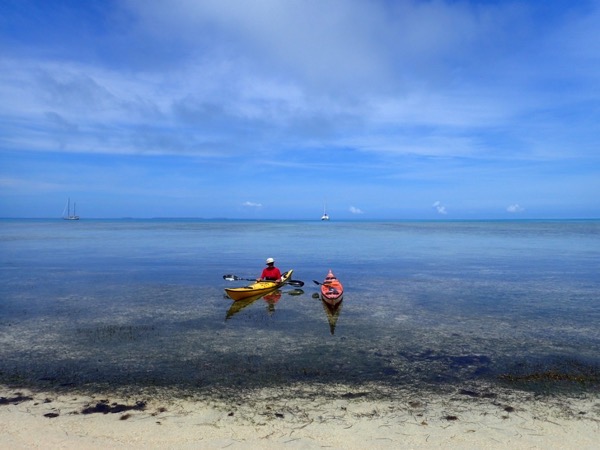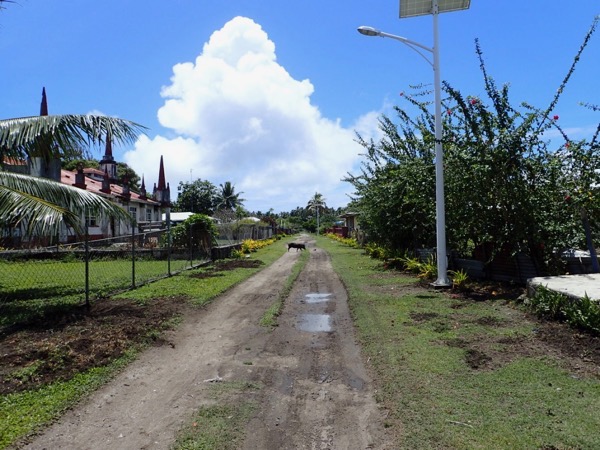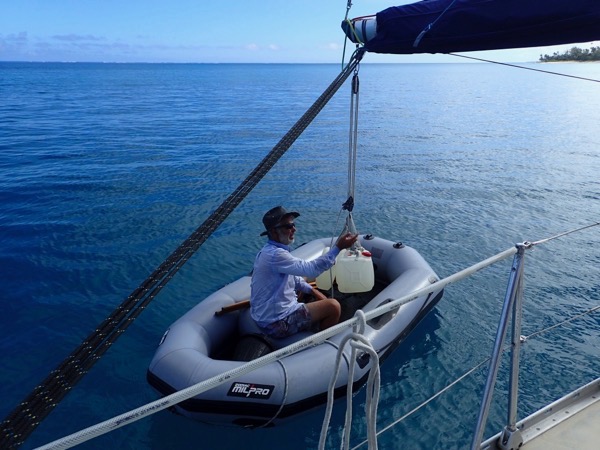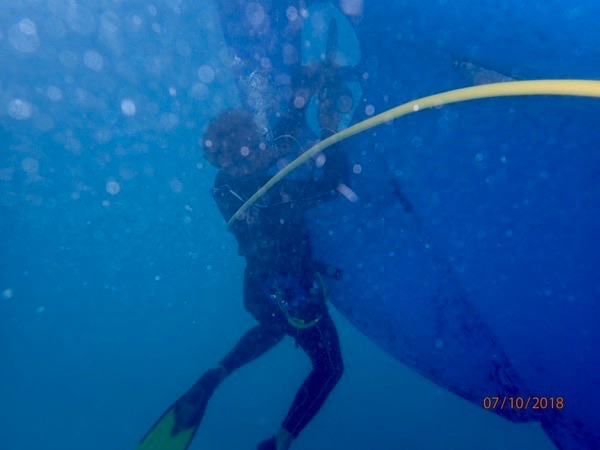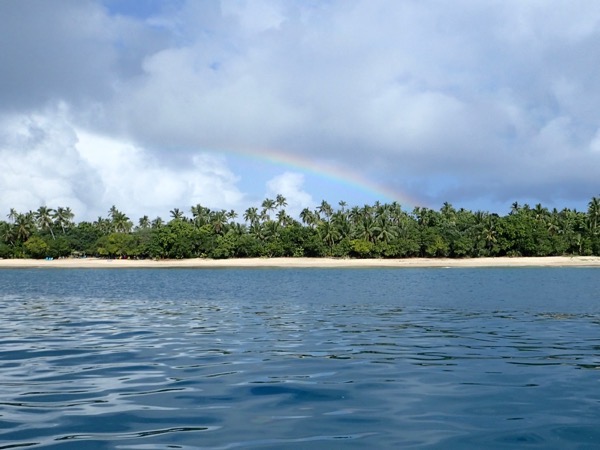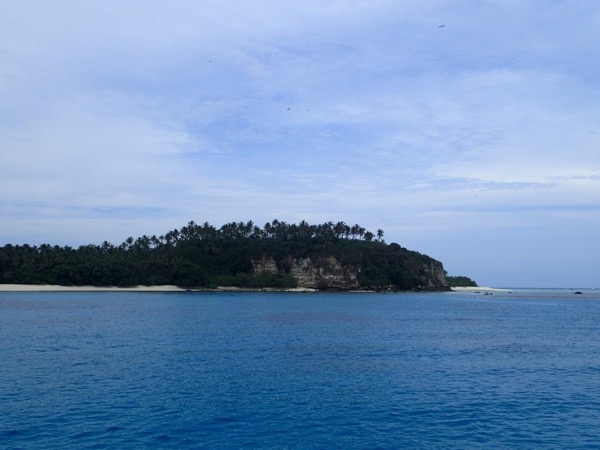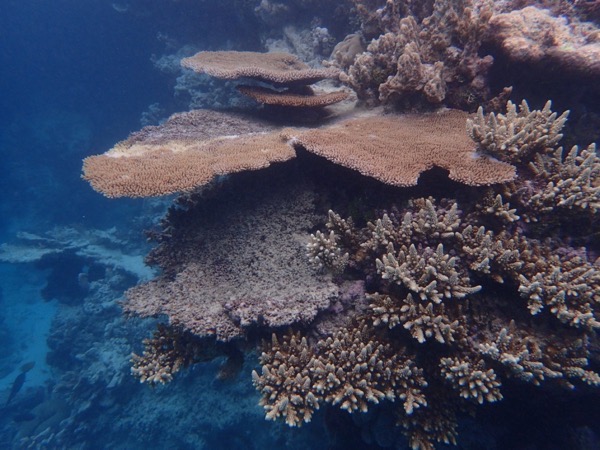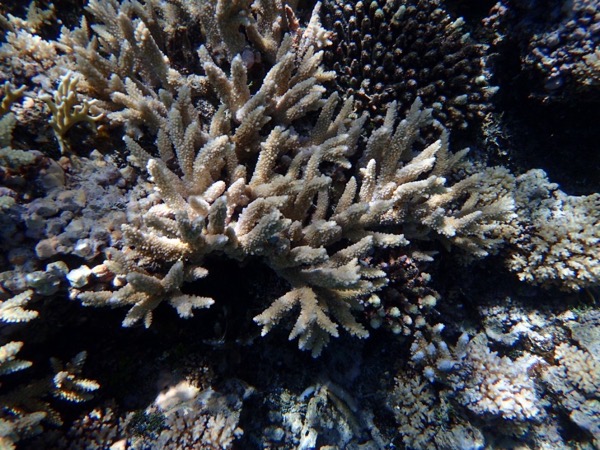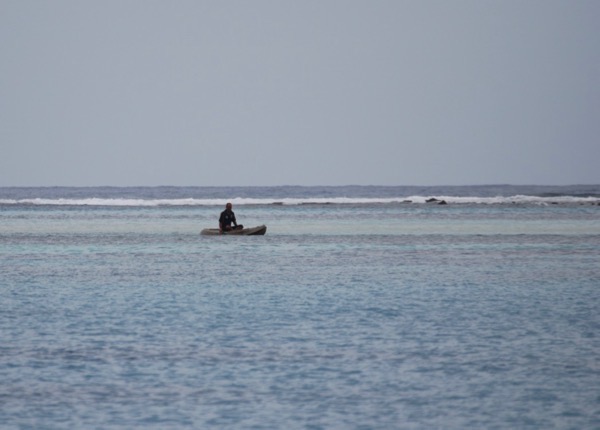The last of the Ha’apai

20:30.12S 174:44.43W
With pleasure we returned to Pangai to sign out of the Ha’apai Group. Our friendly Customs officer enquired how we had enjoyed our visit and gave us the paperwork needed for signing in at Tongatapu, the capital of Tonga. Five days before, we’d returned to the market by kayak from Uoleva, to buy bananas. Then, the older lady had smiled. This time, as we entered the building, she greeted us with a big grin: “Long time no see, where have you been?” Maybe the secret to making friends in Tonga is to stay longer. On the Saturday we kayaked to Uiha Island where we’d heard there was a village. We went for a walk and were surprised how extensive it was. The current line of kings hail from here. Topou I was the first chief to sign up to Christianity. He then unified and Christianised Tonga. Today the royal palace is in Nukualofa, the capital on Tongatapu Island.
Off Tatafa Island, on the way to Uiha (Blue Zulu and Counting Stars at anchor)
A pig crosses the street in the village on Uiha Island By Sunday the wind had dropped, we had to get on with cleaning Caramor’s bottom. New Zealand requires that the hull has been cleaned less than thirty days before arrival. John on Danika called us over the VHF radio. Did we want to borrow a ‘hooker’ to help scrub the keel? We didn’t know what it was but it sounded like a good idea, we needed all the help we could get. It was a mini compressor with a long yellow hose and an air regulator. It meant we could stay down to do the cleaning and no longer needed to keep coming up for air. Franco got the job done in the day!
Trying to raise Caramor’s waterline out of the water for cleaning
Franco cleaning Caramor’s bottom, connected to the hooker
Rainbow over Uoleva Island At last we left our sheltered anchorage off Uoleva Island, we’d been there for over a week, evicting a whole shoal of small fish who’d happily moved into Caramor’s shadow. Our first stop was off Haafeva Island. From the little we had read, it seemed off the beaten yacht track, so we were a little surprised to find three other boats already at anchor. Serenity was one of them and it was nice to catch up with Roy and meet his partner Anna. We will probably see them again in New Zealand as they will be building a house near Whangarei. The next day we sailed to Nomuka Ika Island (Little Nomuka) and the weather was very overcast again. I did go snorkelling but the light was poor. Our final stop was Kelefesia Island, surrounded by reefs and blind rollers. It is the island furthest south in the Ha’apai Group. The term ‘blind rollers’, not to be confused with roller blinds was a new one on us. In what appears to be deep water, a wave breaks, just now and again, making it difficult to see, not a good place for a yacht. The entrance to the anchorage was easy enough but a good lookout was needed as some of the coral heads close in rise vertically to the surface in 10 metres of water. There are big patches of sand where the anchor holds well but the weather needs to be settled because everywhere around are dangerous reefs. Kelefesia was our first true desert island. The small motu in Fakarava doesn’t really count as it was just a few kilometres from a resort and it had a (derelict) house on it. She’s rather pretty, our island, with her white sandy beaches, her cliffs and her rocky ridge. She’s quite small really, just one kilometre long by less than half a kilometre wide and a whole 123m tall.
Kelefesia Tonga is prudish, bathing suits are not allowed and shorts, at least for women, are frowned upon. When the first whites arrived, Polynesians lived happily naked. Clothing in this climate makes you sweat and goes mouldy. Then the missionaries arrived with their prayers, their prejudice and their paraphernalia and the tables were turned. Today Tongans wear heavy black suits on Sundays and the tourists go around in bikinis. Since there was no one to offend on our desert island, we decided to swim to shore and go for a walk on the beach in our swimwear. Rather daring we thought. “Did you hear that?” Franco asked. “It sounded like someone hammering nails.” “Nah, there’s nobody here.” I replied. We dived in and I snorkelled over to check on a reef nearby that was just breaking the surface. It was the most amazing coral head I have seen so far, a stack ten metres tall, with all the possible shapes and colours you can imagine. There were overhangs, grottoes, burrows, and the fish played hide and seek with each other. Franco, who broke one of his fins on the whale watching trip, swam directly to shore. I caught up with him and we swam the last few metres together. Instead of the gradually shallowing beach we had imagined, there was a sheer coral wall and no way of scrambling up onto it without causing damage. We swam parallel to the shore hoping to find a way to the beach but there didn’t seem to be a breach. The snorkelling was amazing with lots of beautiful coral and large groups of colourful reef fish, including the largest we have seen.
Beautiful coral shapes
Little blue fish Back on Caramor, we were about to strip out of our wet gear when we heard the hammering again. A few hundred metres away was a man in a canoe, fishing. He was banging the side of his craft to attract the fish.
The man from Kelefesia He didn’t come over and we didn’t call out. After a while he landed on the beach, hauled his canoe over the sand spit and disappeared. The boat was a plastic sit-on top and he was wearing sports clothing. For all we knew, he could be born and bred on the island or a wealthy Auckland solicitor dropped off on holiday the day before. Whichever, he was living a subsistence livelihood. As the tide came in, it flooded the reef and the beach became accessible once again. We decided not to go ashore. Kelefesia is his island, not ours.
Blue Zulu overtaking us on the way to Tongatapu |
